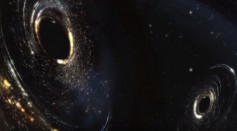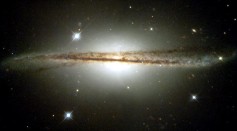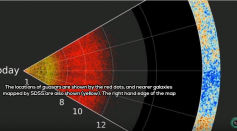dark matter
Sagittarius A* Might Not Be a Black Hole After All, Hints Toward Dark Matter Mass
Optical Clocks Narrow Down the Search for Dark Matter

Dark Distortions: Art Installation Demonstrates How Dark Matter Interacts With Light

LIGO Detected Gravitational Waves That Intrigues The Nature Of Black Holes & Dark Matter For The Third Time

Astronomers Redesign PICO Bubble Chamber to Detect The Trace of Dark Matter in WIMPs

New Unit BAO Reveled By Astronomers To Measure The Distances Between Galaxies And Quasars

Evidence of Dark Matter Emits Gamma Rays Radiation Has Weakened with Latest Analysis

The Biggest Mystery Of The Entire Universe: What The Dark Matter Really Is

Hunting For Dark Matter: Physicist Establish An Underground Facility In An Abandoned Gold Mine

Could Dark Matter and Black Holes Cause the Swirl In Your Galaxy?

Eons After the Big Bang, and 80 Years After It Was Proposed, Dark Matter Takes Form in Andromeda

Strange Andromeda Transmission May be First Sign of Dark Matter
Most Popular

Earth's Magnetic Field Nearly Collapsed 600 Million Years Ago, Sparking Evolution of More Complex Life

‘Morbid’ Alien Theory: Extraterrestrials Haven’t Contacted Humans As They’re Destroyed by Gamma-Ray Bursts

Pharaoh's Curse Unlocked? Scientists Claim To Have Cracked the Mystery of What Killed Over 20 People Who Opened the Tomb of King Tut in 1922

Why Do People Sigh? Here's What These Deep Breaths Do to the Body and What They Could Mean


!['Cosmic Glitch' in Einstein's Theory of General Relativity Could Be Explained in This New Scientific Tweak [Study]](https://1721181113.rsc.cdn77.org/data/thumbs/full/53435/258/146/50/40/cosmic-glitch-in-einsteins-theory-of-general-relativity-could-be-explained-in-this-new-scientific-tweak-study.jpeg)



